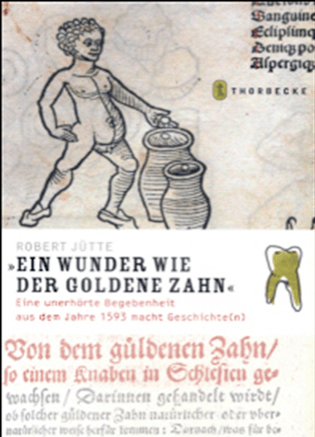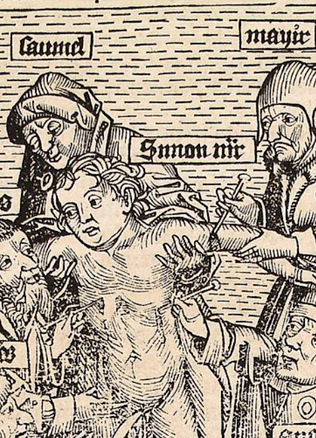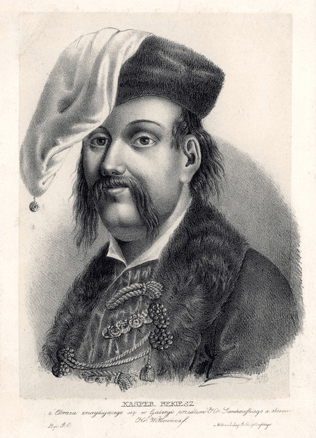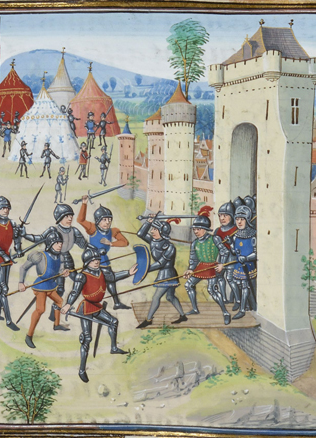Tales and Legends
Kernavė and its surroundings are interwoven with legends written in historical sources, as well as a number of tales that the old people of the area tell.
The Roman version of the name of Lithuania
The Roman origins of the Lithuanians and first dukes of Kernavė are discussed in the Bychowiec Chronicle, a Lithuanian Chronicle written in the 16th century. A large part of the information is strongly influenced by the spirit and ideas of the Renaissance and has little to do with real historical facts. However, one should not discount these layers of information, as often the origins of tales and legends were inspired by real events that have been forgotten.
It was still in the 15th century that Polish historian Jan Długosz wrote that Lithuanians and Samogitians had Roman origins, while the differences in the languages developed, because Lithuanians had long lived near Russians and Poles.
Długosz believed that Lithuanians and Romans worshipped the same gods and observed the same customs and traditions. It is written in the Bychowiec Chronicle that three sons were born to Palemon, a duke that had escaped Rome: Borkus, Kunos, and Spera. After Borkus and Spera died, Kunos began ruling the country. It is here that Kernavė rises from the depths of history along with Kernius, the first ruler of Lithuania: “…And Duke Kunos had two songs: one Kernius and the other Gimbutas…Walking from Šventoji [River] up they found a very beautiful place, he very much liked this place, he settled his son Kernius there and gave the city Kernius’ name, calling it Kernavė… In those times when Kernius ruled…, his people settled near the Neris. They would play pipes. Kernius called the shore, where his people grew in number, called litus in Latin. The pipes they played were called tuba, joining the shore with pipes, he started to call his people Litusbanija in Latin. However, the simple people did not know Latin and began to simply call it Lietuva. And from that time, they began calling the state Lietuva…”
On the edge of history and mythology
In the above-mentioned chronicle it is also written that Kernavė was founded by Kernius, which was also stated by historian Maciej Stryjkowski (1547–1593). It was written he founded it “when people in Lithuania began to make raids through the Neris River to the land of Užuneris, ruled by a Russian duke.
In that Lithuania, Kernius built a castle, and called that settlement by his name, Kernavė.”
We find out from these sources that Kernius did not have any sons and his only daughter Pajauta married Živinbūdis (Kiro). However, the Bychowiec Chronicles notes that he had been Kernius’ son. According to historian Albert Wijuk Kojałowicz (1609–1677), Kernius adopted Živinbūdis in 1085 and, already having grown old, married him to his only daughter Pajauta. Živinbūdis is mentioned among the most senior dukes in 1219 in the creation of an agreement with the Kingdom of Halych-Volhynia, thus he is a historical figure, however he doesn’t fit into the chronological framework, if the beginning of Kernius’ rule, based on Vijūkas-Kojalavičius, is considered to be 1040 or 1035. It appears that it was just someone with the same name.
Tales of restless souls and cursed treasures
Kernavė’s hill forts are shrouded in legend. It has been said that there was an underground tunnel from it to Trakai and further on to Vilnius. In Kernavė the tunnel was closed with iron doors, near Trakai with silver doors, and near Vilnius with golden doors. Lizdeikos Hill Fort is named for the supreme and last pagan high priest Lizdeika. After converting to Christianity, the temple of Perkūnas (the Lithuanian god of thunder) was torn down in Vilnius, and Lizdeika escaped to Kernavė. It was here that the sacred fire was kept alit on Aukuro Hill (Altar Hill) by priestesses called vaidilutės until the high priest’s death. Lizdeika would give sermons and explain dreams through the fire. According to this legend, Lizdeika’s most beautiful priestess was Pajauta. Pajautos Valley, which stretches along the foot of the hill forts, is named in her honour.
Do You Know?
One legend says that there was an underground tunnel from Kernavė’s mounds to Trakai and further on to Vilnius. In Kernavė, it was closed by iron doors, by silver doors near Trakai, and by golden doors in Vilnius.
There were many fascinating tales told by the older inhabitants of Kernavė even in the 20th century. It was said that weapons could be heard clanging underground at night, and exactly 2000 years after the birth of Christ, an army with weapons was going march right out from underground. It was said that there had been a cave on the side of Pilies Hill and on a hot day shepherds would protect cows and sheep and take them there to cool off from the heat. Another story tells of a heated battle between dukes Skirgaila and Švitrigaila, where they invited their armies and a battle began near Pabaiskas. At the time the wife of one of the dukes transported their wealth through the Neris River from Kernavė. The carts, filled to the brim with luxurious things, had a hard time moving. The duchess’s scouts moved through a ford and saw the enemy’s soldiers hiding on the other side. The duchess became frightened and directly against the ford, in the hills, ordered her men to bury the treasure. It seems that it would have been on the slope of what is now called Baltasis Hill (White Hill). In the following centuries these burning luxurious objects would appear at night. The courageous of later times would hunt grass snakes, hoping to find the royal treasure. They would wander those spooky slopes until the break of dawn. However, they would never find anything.
Many of Lithuania’s hill forts are shrouded in fascinating stories about deep underground tunnels that take one to gates or cursed treasures. However, the legends that link Kernavė with the first Lithuanian dukes and the beginning of statehood show that it was precisely here that was the site of one of the most important royal castles of Lithuania at the time.
Gintautas Vėlius



